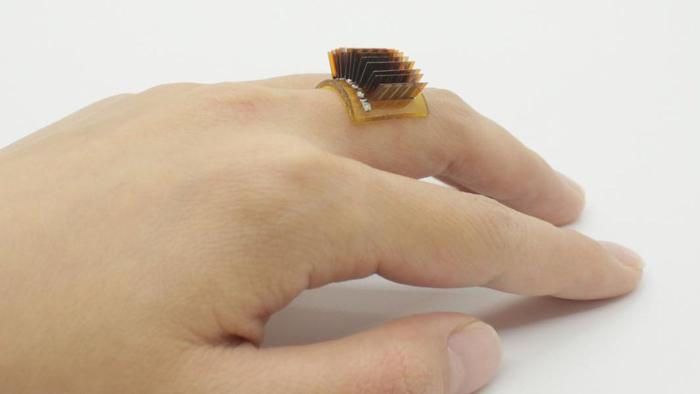A wearable wristband containing a thermoelectric generator (TEG) can convert body heat into enough electricity to power an LED. In future, the technology may be able to power smartwatches and end the need for traditional charging hardware.
“Energy supply is always a big issue, and this could help alleviate the energy crisis,” says Qian Zhang of the Harbin Institute of Technology, China, one of the co-authors of the paper, who has worked on TEGs for more than 15 years.
TEGs are used in a wide range of applications, but are often rigid – something Zhang and her colleagues sought to solve. They layered a magnesium and bismuth material – the TEG materials – between polyurethane and a flexible electrode, enabling the wristband to wrap around a human arm.

The result is a wristband 115 millimetres long and slightly under 30mm wide. It uses the difference between the temperature of human skin and ambient room temperature to generate power.
At its peak, the device is able to generate 20.6 microwatts per square centimetre – more than enough to light an LED linked to the wristband. “The environmental temperature affects performance a lot,” says Zhang. Winter is better, she adds, because ambient temperatures are lower and the difference with body temperature is greater.
Tests show the device can be wrapped around an arm and unwrapped again more than 10,000 times without any significant change in performance. Wearers don’t experience any adverse effects when wearing the wristband.
“I love the idea of harvesting power from the human body, instead of having to use batteries,” says Rolf Hut, a maker interested in wearables who works at Delft University of Technology in the Netherlands. “Given how many LEDs I like to include in my projects, I do wonder how much you can ‘withdraw’ from a human before it becomes uncomfortable.”
The researchers hope to improve performance by increasing the size of the TEG on the wristband and integrating a voltage converter to enable it to power larger electronics – though they point out that doing so will require increasing the size of the whole device.
Journal reference: Cell Reports Physical Science, DOI: 10.1016/j.xcrp.2021.100412
